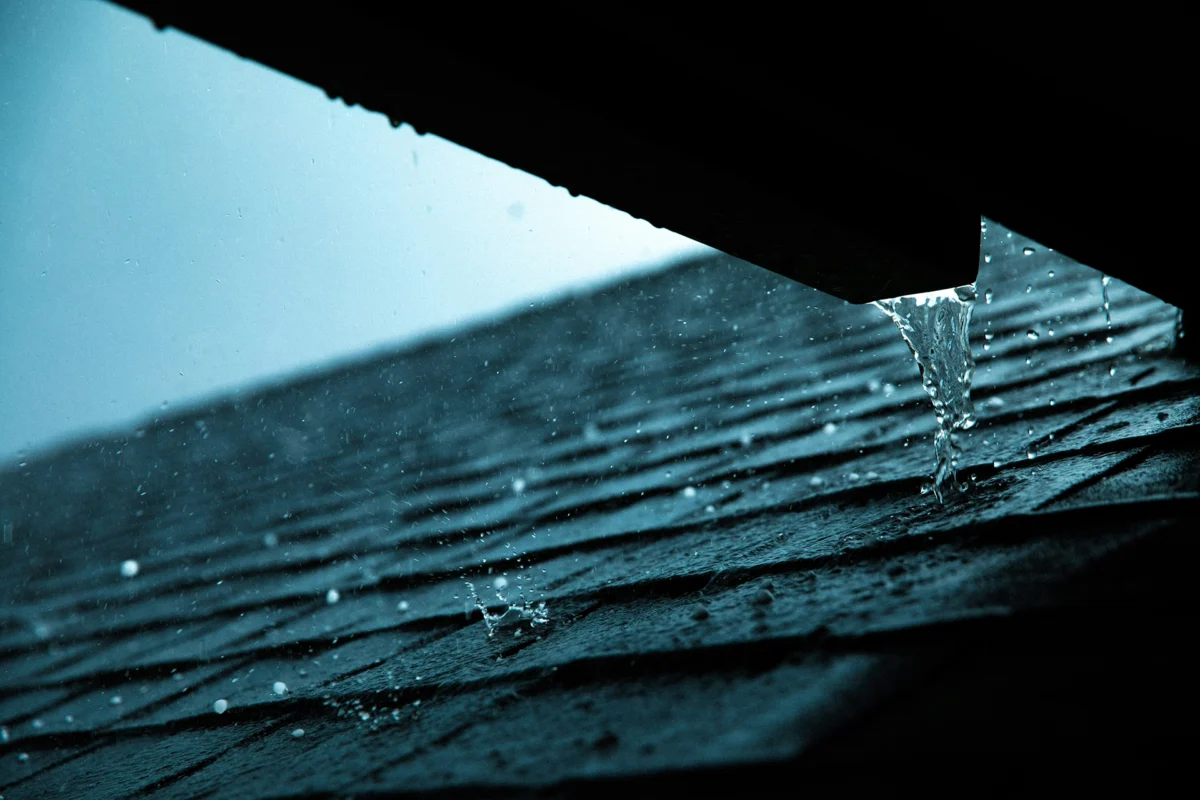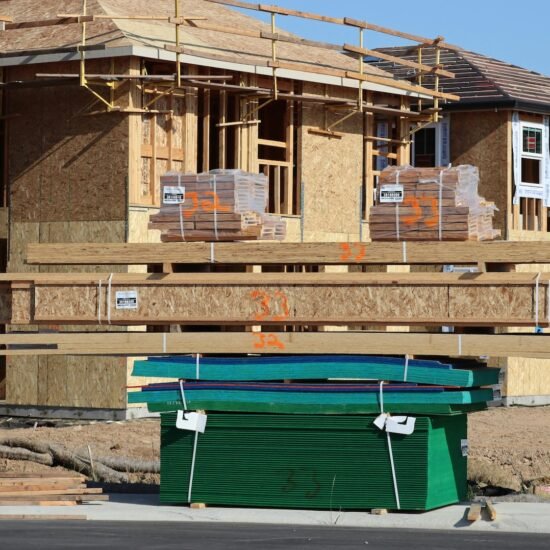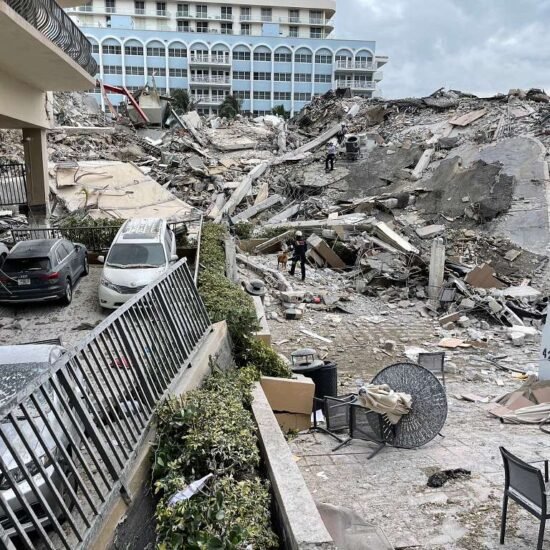
HOA Detective – May 9, 2025: The misguided legislation known as Oregon HB 3746 is now before the State Senate after passing the House vote by a margin of more than 4 to 1. It would seem all but certain to become law at this point with strong backing by a wide group of supporters, many of whom know little to nothing about building science and the challenge of keeping water from penetrating the exterior of a building.
All Buildings Leak: As the aging carpenter Cowboy McCutchison once told a young HOA Detective™ during the early days of his construction career: “All buildings leak.”
It has also been said that you can stop 99% of water intrusion, but the other 1% is the water that causes the biggest problems. Water intrusion is one of the most persistent and costly problems in buildings, especially in multi-unit residential structures like mid- and high-rise condominiums, row houses, townhomes, and multiplexes. These buildings present unique challenges due to their size, height, complex designs, and multiple occupants.
Keeping water out of a single-family house is hard enough; with a much larger building enclosure to maintain and multiple residences and interconnected building systems, the difficulty grows exponentially. Research shows that wind-driven rain is the most significant moisture source that exterior walls must resist:
Unchecked, rainwater will find its way through any weakness in the building enclosure and into structure where untold, costly damage can occur. Below we distill the hard-learned lessons of building science, construction codes, and real-world failures into the Ten Immutable Laws of Water Intrusion for multi-unit attached residential buildings.
These “laws” underscore how design, materials, maintenance, and stewardship of a complex structure such as a modern high-rise condominium is arguably the biggest challenge when it comes to governance of any HOA.
Ten Immutable Laws of Water Intrusion
- Size and Complexity Amplify the Problem of Water Intrusion: Simply put, the larger a building is, the harder it is to keep water from penetrating the exterior enclosure. As buildings increase in size and complexity, the potential points of water entry multiply. Larger structures encompass more joints, penetrations, and interfaces, each representing a potential vulnerability. This complexity necessitates meticulous design and maintenance to mitigate water intrusion risks.
- Height Exacerbates Water Intrusion Challenges: Taller buildings are more susceptible to water intrusion due to increased exposure to wind-driven rain and the complexities of vertical water management (water runs down hill). The pressure differentials at higher elevations can drive moisture into building assemblies if not properly addressed. The height of a building also impacts the cost of maintenance. In fact, the cost of exterior maintenance increases exponentially the further up you go on the building. This economic reality applies not only to sidewall maintenance tasks such as inspecting window caulking and gaskets, but also balcony waterproofing and roof elements. It could be argued that tall buildings are the source of most of enclosure failures whether those failures are due to design, original construction, or maintenance.
https://www.msn.com/en-us/money/realestate/owners-at-a-luxury-skyscraper-on-nyc-s-billionaires-row-say-their-multimillion-dollar-apartments-are-riddled-with-defects/ar-AA1EaXgI
- Multi-Unit Occupancy Complicates Maintenance: In multi-dwelling buildings, coordinating maintenance across various units and ownerships can be challenging. Shared responsibilities and varying standards of upkeep can lead to inconsistent maintenance practices, increasing the risk of water intrusion.
https://sjwlawgroup.com/condominium-water-intrusion-events-who-is-liable-who- pays/
- Cantilevered Balconies Are High-Risk Features: Cantilevered balconies often penetrate the building enclosure, creating complex junctions that are difficult to seal effectively. Improper flashing and waterproofing at these intersections can lead to significant water ingress and subsequent structural damage. Outdoor living spaces like cantilevered balconies, decks, and roof terraces are beloved amenities – but they are also notorious trouble spots for water intrusion. Anytime you have a horizontal surface exposed to rain, especially one attached to the side of a building, you’ve created a potential water trap. Balconies collect rainwater and must be designed to drain it quickly and completely. If water pools or gets absorbed into the structure, it can cause serious damage that remains hidden until structural failure occurs. The 2015 balcony collapse in Berkeley, CA – which killed six people – tragically demonstrated this risk.
https://www.kqed.org/news/10565257/5-killed-8-injured-in-berkeley-balcony-collapse
- Curtain Walls Are Prone to Leakage: Curtain wall systems, while aesthetically pleasing, are susceptible to water intrusion due to their reliance on sealants and gaskets. Over time, these components can degrade, leading to leaks. Proper design, installation, and maintenance are crucial to ensure their integrity.
- Integrity of the Building Enclosure Is Paramount: The term “building enclosure” encompasses all components that separate the interior from the exterior environment, including walls, roofs, windows, and foundations. Ensuring the integrity of the entire enclosure is essential to prevent water intrusion.
https://www.finehomebuilding.com/2024/04/11/building-envelope-vs-building-enclosure
- Tiny Gaps Cause Giant Leaks – Especially in Windows and Curtain Walls: It may seem ironic, but in most instances 90% of the water intrusion occurs through less than 1% of the total exterior area. In other words, broad expanses of wall or roof rarely leak in the middle; it’s the tiny gaps – the joints, seams, penetrations, and interfaces – that are the usual suspects. Nowhere is this more evident than in windows, curtain walls, and other glazed façade systems. These components involve numerous pieces (frames, glass, gaskets, sealant joints, etc.) and connections to the surrounding wall, each of which must be perfectly waterproofed. If even one small corner is missed or one sealant bead fails, water will find it. Multi-unit buildings often feature large window walls or glass curtain wall systems to provide light and views. The trade-off is that you introduce hundreds or thousands of linear feet of sealant lines and gaskets – each a potential leak path as they age or if they were improperly installed. According to curtain wall experts, even a pinhole in a seal can result in significant water ingress under wind-driven rain conditions.
Windows and sliding glass doors in mid-rise buildings face similar challenges: if flashing around the window frame is missing or if the caulking around the perimeter cracks, water can and will seep in around the window even if the glass itself never leaks.
- Water Intrusion WILL Occur, it is Only a Matter of When: As a result of the 8th Immutable Law, maintenance is not optional, it is mandatory. All Materials and Sealants Degrade – No matter how well a building is constructed, time and weather will inevitably wear down its defenses. Sun UV exposure, temperature swings, moisture, and building movements cause sealants to crack, membranes to fatigue, metal flashings to corrode, and paint or coatings to fail. For multi-unit residential buildings, a proactive maintenance plan is essential to keep the building enclosure performing over decades. This includes routine inspections and timely renewal of all the critical moisture barriers: re-caulk windows and control joints on a schedule, repaint or reseal exterior surfaces per product life, replace deteriorated flashing, and ensure roof membranes are repaired or replaced at end-of-life.
- Inspect Early and Often: Closely tied to maintenance is the practice of regular inspections. Even the best systems can develop vulnerabilities over time, so the only way to stay ahead of water intrusion is to find issues early through proactive inspections. This is why many global standards and forward-thinking jurisdictions enforce routine building envelope inspections – a practice the U.S. is starting to adopt, albeit slowly. For instance, New York City’s Local Law 11 (now the Facade Inspection & Safety Program, FISP) requires all buildings over six stories to have their façades inspected by an engineer or architect every five years, precisely to identify and mandate repairs of any unsafe conditions (often stemming from water-related deterioration).
- Envelopes are for FedEx – Enclosures are for Engineers: The Building Enclosure is a design assembly which must work as one to achieve the performance goal of the system which is to protect the structural elements of the building from the deleterious effects of the environment, which can weather, but also location-specific challenges. A building is not protected from moisture by just one layer or component – the entire building enclosure is the shield against water intrusion. The term building enclosure (sometimes called building envelope) refers to all the physical components separating the interior from outdoors – not only walls and windows, but also the roof, balconies, foundation, and waterproofed slabs below grade. In other words, every side of the building (top, bottom, and sides) is part of the defense against water. Experts prefer the term enclosure because envelope can imply only the skin of the walls and might exclude the below-ground waterproofing.
https://www.energyvanguard.com/blog/building-envelope-or-building-enclosure-which-is-the-better-term/#:~:text=%E2%80%9CBurnett%20proposes%20replacing%20the%20term,%E2%80%99
In conclusion: Exterior building maintenance is critical to the performance of ALL buildings. Maintenance must be timely and consistent throughout the life of the building. In the common interest community setting of condominiums and attached, planned unit housing developments, the responsibility for maintaining a building is often left to unpaid volunteers who are not building science experts. This set of circumstances is a witch’s brew that can manifest itself in a perfect storm before anyone realizes what is happening. Weakening the construction warranty provisions of state statutes, as is being proposed by Oregon’s HB 3746 is NOT the way to preserve buildings or protect property values.
Because You’re Buying More Than a Home!






